Archived Storm Damage Blog Posts
Keeping Flood Prevention Basic | SERVPRO of Houston County
4/1/2024 (Permalink)
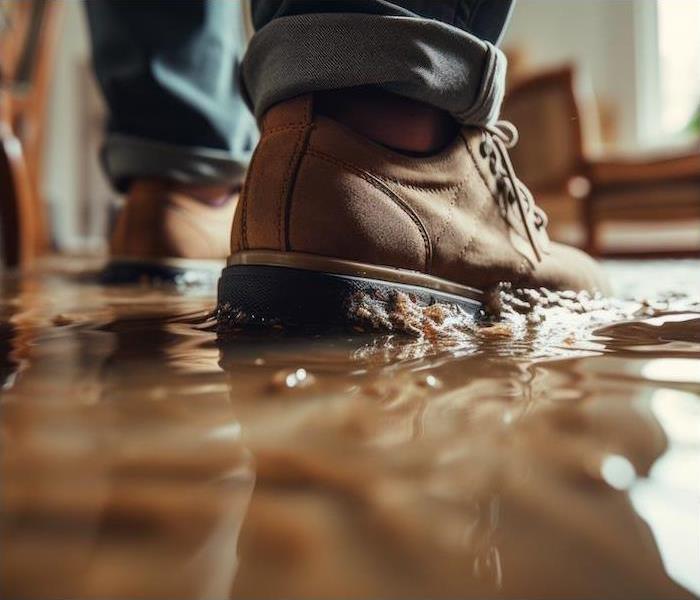 SERVPRO of Houston is ready to help in a moments notice after spring showers leak in to your home or business.
SERVPRO of Houston is ready to help in a moments notice after spring showers leak in to your home or business.
When you want to do something well, you need to start with the basics. If you have kids who bring home homework, this is a fact that you know well. Helping with math homework will always go better when you start with the basics.
Starting with the basics is also a good way to prepare and protect your home from potential disasters. We may not be able to control Mother Nature, but when we prepare for her wrath, we can come through anything she sends our way with far less damage.
Floods are one of the top ways that homes are damaged all across the nation and throughout the year—which makes preparing for them crucial.
Know Your ZoneFlooding happens in a great variety of ways, and not all of them come directly from nature. Manmade disasters, such as appliance failures, can certainly be incredibly detrimental to your home, but they are often easier to control than a natural disaster. While our community is fairly inland, it isn’t uncommon to see heavy rains and tropical storms that can cause flash flooding, roof leaks, and ponding water.
With so many risks being common to our area, getting to know where your home lies on a flood plain can be a helpful way to better understand how to stay protected.
Along with understanding your flood zone, take the time to get to know your yard well. If you have an area of your yard that stays wet even with a small amount of rain, it could be helpful to add organic materials or a rain garden to pull water down into the soil and prevent puddles. Lengthening your drainage spouts could be another helpful way to prevent water from getting in your home.
If your home or community has a lot of trees, covering your gutters is a good way to prevent blockages year-round. Checking your roof on a regular basis will also help ensure water never gets trapped and leaks through your home. Check it twice a year and after heavy winds for damage.
Prepare to PreventThe more you can understand the area around you, the better you can protect yourself—but there are a few more actions you can take to keep your home safe from flooding. Simple home maintenance inside and out will go a long way in preventing water damage.
Start in your yard by ensuring you have a gentle slope away from your house. Be sure to fill in any spots that wash out over time so that puddles can’t form near the foundation. Taking your gutter downspouts underground can not only protect them when a hurricane pushes inward, but it will also ensure water doesn’t have the opportunity to get into your home.
Inside, work from your basement up and ensure everything is well-sealed. If you have a basement, check regularly for signs of gaps or cracks and have it professionally sealed when they become visible. If you don’t have one already, add a sump pump to keep things dry. Replace caulking around your windows and doors throughout your home seasonally as it begins to age.
Preventing and preparing your home for flooding can be simple when you take things back to the basics. Put these items on your to-do list to give the home you love the best care possible. It will keep you safe, and it is much easier than teaching your children division.
Do you have water damage in your home? Contact us at SERVPRO® for fast recovery.
Preparing for Spring Storms | SERVPRO of Houston County
3/1/2024 (Permalink)
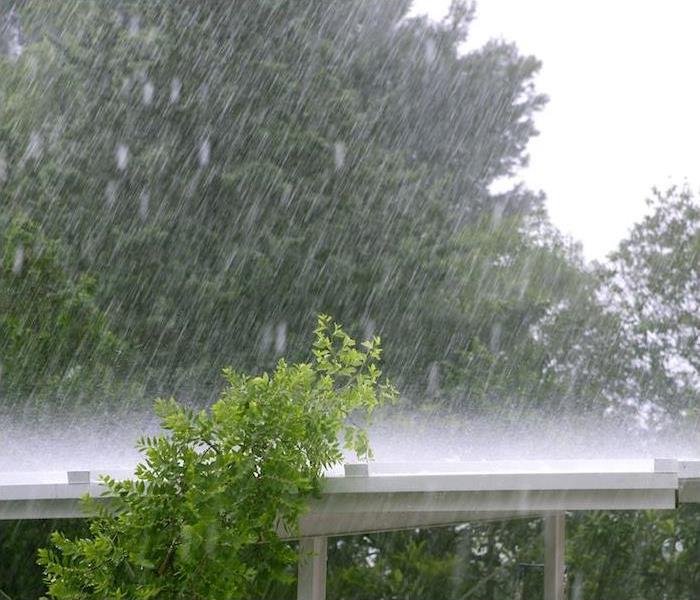 Let SERVPRO of Houston County help you get from April showers to May flowers.
Let SERVPRO of Houston County help you get from April showers to May flowers.
Spring has finally come back around, which means new flowers, greener grass and plenty of spring storms. Here in our part of Georgia, spring can bring anything from frost to tornadoes and heavy thunderstorms.
As spring stretches along and temperatures start to feel more and more like summer, storms can often become intense. With such a wide variety of weather possible during this season, it is crucial that we all prepare ourselves for anything.
In order to be prepared, you need to have a reliable way to receive weather notifications and updates. There are lots of options that can help you keep your family safe.
The Power of the InternetFor many of us, screens and phones are an integrated part of our day and never very far away from our hands. That makes receiving notifications on your cell phone a great way to stay safe. There are Wireless Emergency Alerts that come through automatically for a variety of situations, but you can also sign up for a number of apps that can keep you up to date.
When you choose an app to receive notifications from, stick to well-known names or local sources. Many radio and news stations have their own apps that can notify you not just when the weather is severe, but when your town is facing any other kind of events. Make sure you sign up for alerts from the city as well, which can also keep you informed about road closures or other emergencies.
If severe weather is predicted to be heading your way, don’t rely on alerts alone. Keep an eye on the news so that you are not only aware of how Mother Nature is feeling, but also staying informed about evacuation orders and shelter openings.
Non-Electronic OptionsWe may love our screens and the ways they can keep us connected, but electronics all have a battery that will eventually wear out. It’s not uncommon for storms to knock out power long-term, so it is crucial to have another way to receive alerts and news updates.
If you live close enough to hear weather sirens at home, get to know the different alarms so that you can respond appropriately. Invest in an NOAA weather radio as well. These are often powered with a hand-crank or solar power and can last for several hours. They are also portable, which means even if you are sheltering or evacuating, you can stay informed.
Having multiple ways to receive weather alerts can save your life—but it doesn’t mean you won’t end up dealing with some damage to your home after an event rolls through. Call us the moment you discover damage, and we can start your recovery around the clock. We will get things put back together so you can get back to living like normal.
Serious storms can cause serious property damage. Call SERVPRO® 24⁄7 for immediate restoration assistance.
Damage and Your Home | SERVPRO of Houston County
11/17/2023 (Permalink)
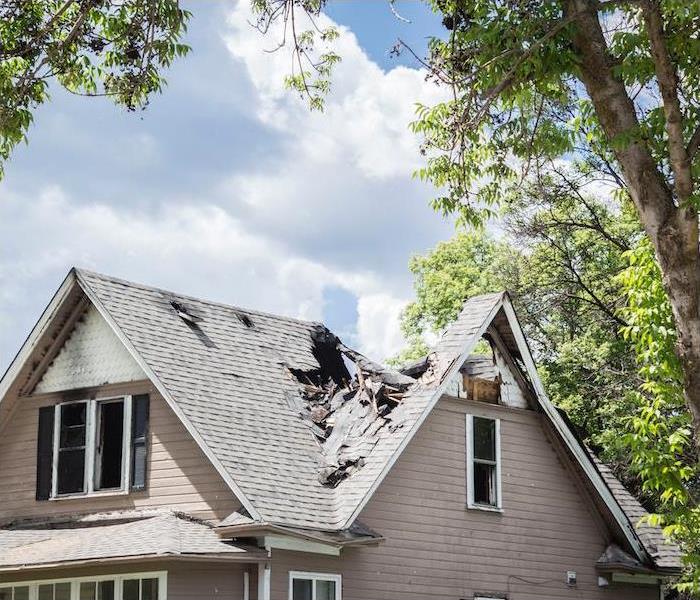 If you discover damage in your residence, call SERVPRO of Houston County right away.
If you discover damage in your residence, call SERVPRO of Houston County right away.
Every day, your home faces a number of threats that could leave it damaged. Severe storms, fires or even just aging structural beams are all disasters that could happen at any moment. There is even the threat of the neighbor who loves to impress his kids with how far he can throw…and leaves your window broken and you on the phone with your insurance company.
There may be risks, but we can’t spend all of our time worrying about them. Instead, we can prepare for them so that our homes are as safe as possible. We can’t predict everything that will happen, but when we are ready for anything, extreme losses can usually be avoided.
To get prepared, we have to first make sure we understand just how our homes can be affected by some of the biggest risks. The more you know about what it is you may face, the less scary risks will become and the easier the recovery process will be. With SERVPRO® of Houston County right around the corner, you can rest assured that your restoration process can happen fast.
The Biggest Risks
Georgia is a beautiful place to live, with fairly moderate temperatures and plenty of green spaces. We all know too well, though, that the weather in Warner Robins and surrounding areas can be a mixed bag. Tornadoes are a very real possibility in the warmer months—we even saw 18 in one day in 2022. Thunderstorms, heavy rains and even the occasional freeze also can’t be ruled out.
With so much volatile weather often a possibility in our forecast, there are lots of threats we need to be prepared for. The most common ways your home might be damaged are water damage, roof damage and fires.
We might be landlocked in this part of Georgia, but heavy rains still leave our roofs vulnerable to leaks and plumbing failures can quickly flood the insides of our homes. Our roofs are also at risk from strong winds during thunderstorms, tornadoes or even the lingering tropical storm pushing in from the coast. Fires can also start internally or externally, although most house fires are the result of manmade error.
Compounding Damages
We know from seeing the tornado damage around us over the years how traumatic living through a disaster can be. We also know that one kind of damage often leads to another. Flooding rains can leave your basement full of water and most of your property wet, which can then allow mold to form and rapidly spread to your foundation.
Fire will burn everything near it, but smoke and soot can travel well beyond where the flames were, leaving walls blackened and your entire house with an odor. On top of that, the water or chemicals used to put out the fire can leave your home with additional damage.
Regardless of what kind of disaster your home experienced, recovery is completely possible step by step. The SERVPRO team is trained in a multitude of situations, which means we are ready to handle every single part of your restoration. We have experience in water, fire, wind, mold and even construction. No matter what has happened, we can put your home back together again.
After a flood occurs in your home, our first step will be to get everything dry. We will also start making sure everything is structurally sound and tackle mold growth. This might mean we need to replace parts of your foundation or a roof beam, or it could mean sanitizing and removing odors.
When a fire disaster strikes your home, we will tackle removing the most burned areas first. We will also seal your home from the elements while the rest of your recovery proceeds. Our crew will address every room to ensure smoke, soot and odors are gone. Depending on how bad the damages were, we can tear down and rebuild rooms so that your home is your home again.
SERVPRO is the total package. We work directly with your insurance and coordinate any other contractors that are needed to put everything back together. Our team’s goal is to make the process simple and get you back home quickly.
Does your home need restoration and you don’t want to make more than one call? Contact us to get everything handled by one team.
How to Handle Strong Winter Storms | SERVPRO of Houston County
11/17/2023 (Permalink)
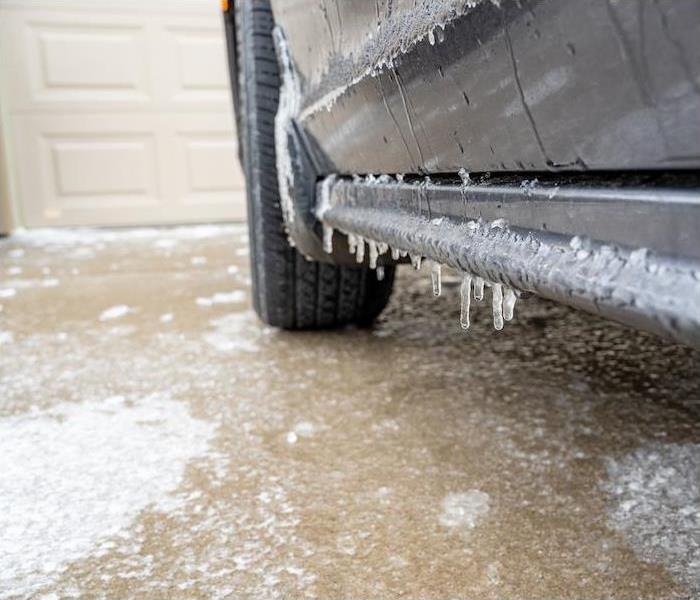 The winter season is almost upon us! SERVPRO of Houston County has your back with these helpful tips.
The winter season is almost upon us! SERVPRO of Houston County has your back with these helpful tips.
Winter in Georgia can be a daily adventure. For most of the season we can anticipate mild temperatures, gray skies and rain. While snow is pretty rare, it can’t be ruled out—and neither can ice.
Whatever each day brings, the more we are prepared for the season we are, the safer we can stay. If we get our home and family ready for anything, we can avoid disasters.
Preparing Your HomeWhen a winter storm is headed our way, you need to prepare ahead of time so that you stay indoors as the worst of it blows through. Intense rain and freezing temperatures can make incredibly dangerous driving situations that you want to avoid.
Check on what emergency supplies you have around your home, and if you don’t already have one, invest in a weather radio. Winter weather can knock out power quickly and for the long-term. Gathering up supplies is crucial for staying safe and warm.
Put together an emergency kit that includes batteries, flashlights and basic first-aid supplies. If you have a fireplace, make sure you have plenty of wood or that your pilot light is on and ready. Gather up your blankets and sleeping bags—this might be the perfect time for a family slumber party.
Update your contact list as well, and consider where you might stay if things get really cold. Talk with your family and friends about the best way to keep everyone safe. Warming centers often open at the Salvation Army if you need a place to go during the day.
Taking Care of Your Home After the StormOnce things have settled down outside, take some time to look over your house and check for damage. Even if you don’t see anything right away, there are a few things you will want to do to ensure your home stays safe.
Inspect your roof for potential wind damage or debris buildup. If the temps stay low enough, ice could form at the corners of your roof and leave your gutters blocked. Make sure water can run cleanly through and remove any leaves or limbs.
Walk around your yard and the perimeter of your home as well. Clean up any debris that has blown around, paying special attention to the exits of your gutter downspouts to ensure they are clear. Look over your siding and the rest of your gutter system as well to make sure everything is still connected and nothing is out of place. Remove debris from around your HVAC units and external vents on your home to prevent life risking carbon monoxide buildup inside.
How We Can HelpIf you do find damage after or even experience damage in the midst of a winter storm, call us right away. We are available around the clock and will start getting your information together in order to send a team to your house. Once they arrive, they can fully assess the situation and let you know exactly what restoration will entail.
We make it our goal to get your home back to exactly as it was before the storm quickly and efficiently. Our professionals will make your restoration process as simple as possible so that you can get outside and enjoy whatever the winter season brings.
Our team is always ready for anything! Contact us at SERVPRO® of Houston County for a quick restoration after suffering damage from a winter storm.
What to Do When Your Home Is Damaged in a Storm | SERVPRO of Houston County
9/18/2023 (Permalink)
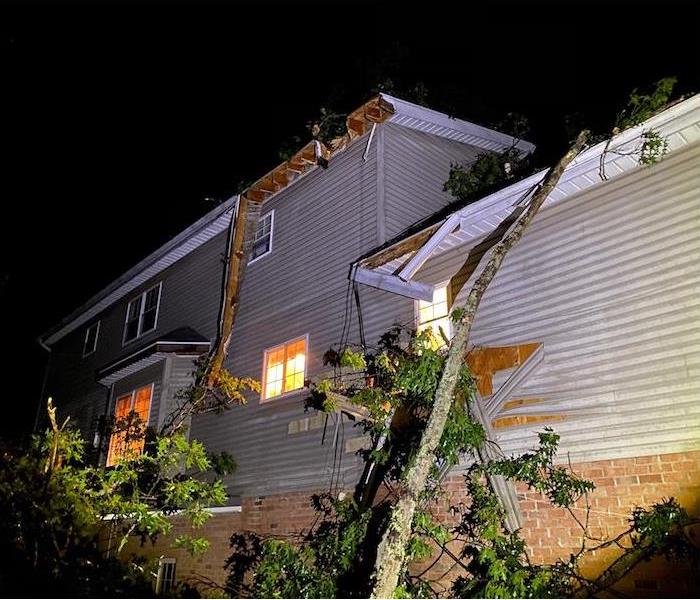 Summer storms affecting your property? Call SERVPRO of Houston County to restore your space in no time!
Summer storms affecting your property? Call SERVPRO of Houston County to restore your space in no time!
Even if you had time to prepare for it, a storm might blow in and leave you completely overwhelmed. A thunderstorm can have more strength in speed than you thought possible and create more destruction than you have ever imagined.
Central Georgia has had a history of pretty severe storms. Thunderstorms are common throughout the year, but spring and summer bring us heavy rain, flash floods and tornadoes. We also see the remnants of tropical storms and hurricanes that blow into the Georgia coast.
Preparing your family and your home ahead of time can help mitigate damages, but it won’t stop everything. If you do find yourself riding out a storm only to later find your home has taken a hit, what do you do next?
Always make safety a top priority, even after the storm is long gone. Grab some shoes and calm your breathing before heading out to take a look at everything that has happened. Safely taking some steps after a storm has damaged your home can help ensure a quick recovery.
Immediately After the StormOnce the initial threat of the storm has passed, you and your family need to continue to stay vigilant for lingering lightning, heavy rains or even another round of severe danger. Don’t turn your weather radio off, and keep a clear path back to your safe sheltering location so you can move quickly if another warning is issued.
As the dust continues to settle, start reaching out to your loved ones. Going over how you will communicate before a disaster strikes is crucial so that everyone knows what to expect. If cell service isn’t available, text messaging may still work.
If you are able to safely get out, go check on those around you next. Don’t go into damaged buildings or homes, but instead, try to find a safe way out for anyone that needs it. Clear roadways as you are able in order to allow for emergency personnel to come in.
Once you have ensured your loved ones and neighbors are safe, start taking some pictures of your own damage, and call SERVPRO® of Houston County. Our phone lines are open around the clock, which means your recovery can start right away no matter what time of day it is.
As More Time PassesThe work that lies ahead of you will become more clear as time passes, but even in the hours, days and weeks following a disaster, you need to stay cautious. Watch for hazards you could step on like nails, and keep a device charged in order to receive weather alerts ahead of more storms.
One of the first tasks that should be tackled after a disaster is taking steps to prevent additional damages. Our SERVPRO crew of experts will immediately work to seal off your home, tarping your roof or closing off broken windows as needed. We will also get rid of standing water and start drying out anything in your home that may have gotten wet.
Our team will work directly with your insurance company so that you don’t have to worry about struggling through a claim. At this point, as the damage to your home is fully assessed, you may need to consider relocating your family temporarily while work is completed.
As you journey through your recovery process, staying calm will help things stay smooth. It can be devastating to see your home damaged after living through severe weather, but when you have a trusted team at your home, things will be back to normal fast.
If a storm leaves your home damaged, contact us for fast recovery. We’re here 24⁄7 when you need us.
Protecting Your Home From Summer Storms | SERVPRO of Houston County
7/19/2023 (Permalink)
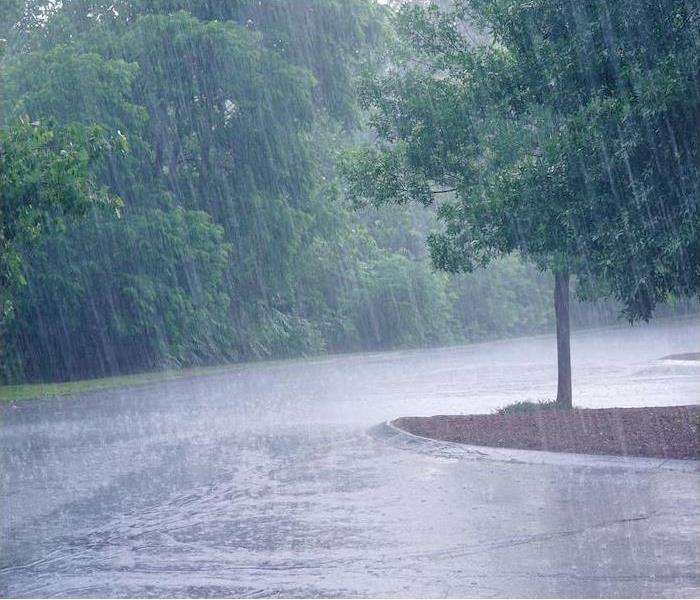 Have you been impacted by the unusual summer storm season? SERVPRO of Houston County has your back when you experience flood and water damage.
Have you been impacted by the unusual summer storm season? SERVPRO of Houston County has your back when you experience flood and water damage.
Here in Houston County, it is not uncommon to see severe weather. At this time of year, we’re engulfed in hot and humid days, creating a perfect atmosphere for storms, including thunderstorms and even tornadoes.
That’s why it is important to take time now to prepare your home against storm damage. Start with these steps:
Storm Season PreparationPreparing your Houston County house for storms doesn’t have to be complicated. In fact, many of your everyday activities or household chores may already be a part of storm prep.
That lawn work you have planned for next weekend? That’s storm prep. By taking a close look at your yard, trimming tree branches and removing debris, you are preventing those objects from becoming flying projectiles in the case of a storm.
Keep a close eye on other objects around your house and property, too. Furniture, appliances and other objects that stay outside permanently should be tied down or otherwise secured so that they cannot become airborne.
You also need to check your house structure itself. To avoid potential leaks during periods of heavy rain, it’s essential to maintain the caulking around window and door frames. You should also have your roof checked regularly, particularly after storms, looking for loose shingles or gaps.
Strengthening Your Home’s DefensesThough many storm preparations are cost-free, you may also want to take extra precautions to safeguard your house.
It is wise to invest money on storm shutters, especially if you live in a wind-prone area like ours, and buying stronger, more fortified windows can also be helpful. If your property is filled with trees, consider installing a gutter guard to keep branches and other debris out of your gutters. This will allow water to continue flowing properly when it rains.
If you live in a modular home, invest in strong tie-downs to brace the home against winds. And remember to evacuate your home for a safer space when a severe storm or tornado is possible.
Make sure you have at least two methods for receiving storm alerts so you’ll know when you need to seek shelter inside your home or move to a safe space.
Remember, in the event of storm damage, SERVPRO of Houston County is available 24⁄7 to restore your home to preloss condition.
Train Your Warner Robins Team to Weather the Storm | SERVPRO of Houston County
7/14/2023 (Permalink)
 If your home or business was damaged in a storm, call SERVPRO of Houston County to get you back in action.
If your home or business was damaged in a storm, call SERVPRO of Houston County to get you back in action.
Being caught in the middle of a storm is already a scary situation for businesses, but having to face it when you aren’t prepared can send your team into a panic. As a business owner, you are responsible for preparing your team for anything that strikes, especially dangerous weather.
Extreme weather can do major damage to entire communities, and at times, businesses are the ones that are hit the hardest. To avoid damage or even getting shut down, you’ll need to prepare your team for any weather threats that might hit our area.
Use our tips to prepare your crew for severe weather and keep your business up and running after the storm.
Know Your RiskAs you put together your business plan, you’ll need to plan it based on the weather patterns that hit your area the most. Your building and team will be even more prepared if you plan for what will hit most often.
There’s a lot to consider when it comes to the extreme weather that affects Warner Robins every year. Every year, floods, thunderstorms, tornadoes and snow threaten homes and businesses in this area. You must be ready for each of these scenarios in order to keep your Warner Robins crew safe.
Researching your flood risk can be a great place to start as you plan for specific threats. You can also turn on weather notifications for alerts and check the forecast before each work week.
Make a Plan to CommunicateBeing able to communicate with your team will be one of the most important things you’ll need during a storm. When things turn dangerous, having the ability to stay connected via email or other types of communication can be lifesaving.
Make sure everyone in your workplace has access to the same communication system so they can receive live weather updates and any instructions on necessary precautions. Quick communication like this can also help prevent injuries, allow everyone to get to safety and inform them of any needed evacuations.
Plan Your EvacuationIt can be a scary situation to anticipate, but you’ll need to prepare your team in case of an evacuation. Go through your space and draw a visual outline to show your team where to go during a weather evacuation. Regularly practice evacuation procedures to make sure all staff members, including new hires, are aware of where to go during an emergency.
In other cases, a weather evacuation may not be necessary; instead, your team may be required to shelter in place. Choose a safe area in your building with no windows and make sure to stock it with any necessary supplies!
No matter what kind of weather emergency hits Warner Robins, it’s essential to plan ahead to protect your hardworking team. Avoid getting caught off-guard when severe weather strikes your business and face it head on with the help of preparedness.
Don’t let extreme weather take control! If storms strike your business, SERVPRO® can help you restore your losses.
Brace for Deadly Winds in Warner Robins | SERVPRO of Houston County
6/14/2023 (Permalink)
 If you've suffered from storm-related damage to your home or business, make SERVPRO of Houston County your first call.
If you've suffered from storm-related damage to your home or business, make SERVPRO of Houston County your first call.
During the hot and humid months, a surprise gust of wind can provide a much-needed break from the sweltering sun. Though you might not be able to see it, wind is an omnipresent force that we can always rely on, even when it’s not exactly what we want.
Nonetheless, when the wind strengthens and transforms into a fierce gust, it can inflict significant harm, leaving behind catastrophic property damage. While powerful winds are usually linked with extreme weather, they can occur unexpectedly on sunny days.
Acquaint yourself with the potential aftermath of high winds and how they can place you in a path of destruction.
The Different Kinds of WindAround half of most dangerous wind events are brought on by extreme thunderstorms, making them an unavoidable danger. In fact, thunderstorms create winds that are just as dangerous as tornadoes.
Thunderstorms have the potential to generate winds that reach speeds of 60 miles per hour, resulting in debris being thrown around and buildings being significantly damaged.
Unlike tornadoes, straight-line winds are not associated with rotation and can cause damage even in areas without any rainfall. They can reach speeds of up to 100 miles per hour, making them an incredibly powerful form of thunderstorm wind.
Tornadoes’ destructive capabilities are a result of the amalgamation of different wind types they generate. Tornadoes are a serious threat here in Warner Robins that can produce deadly winds around this time of the month. Even if tornadoes aren’t present, winds can pick up during thunderstorms and have a devastating impact.
Wind Damage and PreventionThe impact of high winds on properties can be deadly, resulting in downed trees, debris blowing around and damaged power lines. Even a mobile home that is properly anchored can experience significant harm when winds exceed 80 miles per hour.
To minimize potential harm from high winds, it is essential to stay informed about weather alerts and take necessary steps to secure outdoor objects, such as patio furniture or garbage cans, before strong winds arrive.
Be proactive about maintaining the trees on your property by trimming them regularly and removing any weak or diseased branches. Also, keep an eye out for loose items in your yard that could cause damage in high winds.
When the winds have settled, examine your property and land to verify for any noticeable damages. Climb up and inspect your roof to catch any damages, such as loose shingles, before water damage occurs. If you suffer from damage, reach out to SERVPRO, and we will restore your home as soon as possible.
Has your home been damaged by wind? Call us and get things cleaned up fast.
What You Should Know About Weather Alerts and How to Secure Your Home | SERVPRO® of Houston County
7/12/2022 (Permalink)
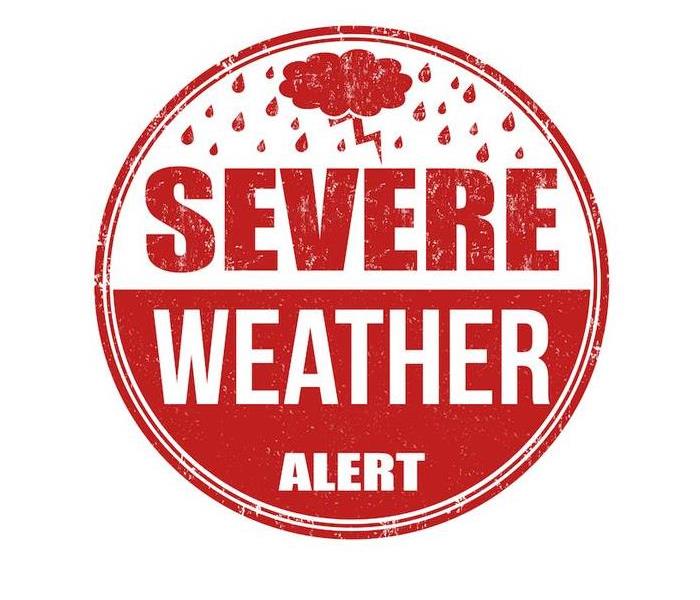 If you suspect any damage to your home from a recent storm, call SERVPRO of Houston County.
If you suspect any damage to your home from a recent storm, call SERVPRO of Houston County.
There are around 42 different types of weather alerts, divided into seven different groups. These warnings are issued when conditions such as heavy rain or thunderstorms are forecast in our area. When a severe storm is brewing, all this information can get pretty confusing!
Knowing what the various types of weather alerts mean for your unique location can help you prepare yourself and your family for any crisis. You can also take action to prepare your home before severe weather strikes to best protect your property.
While it is helpful to be aware of all weather conditions, it’s critical to be aware of the weather patterns that can have the most impact on our community here in Houston County.
How Alerts Are IssuedSo, how do forecasters go about issuing these weather warnings? How is the magnitude and position of a storm monitored when weather forecasts are simply predictions? There are variables that determine the delivery of these warnings.
The National Weather Service is responsible for weather forecasting and providing weather warnings as these conditions develop. These warnings are issued by six regional offices nationwide, allowing for more location-specific alerts. The alerts you receive in Warner Robins are sent out from the Southern Region headquarters in Fort Worth, Texas, along with sub-offices here locally.
To make forecasts, NWS meteorologists and other specialists use a variety of data sources, including satellite radar, weather balloons, seismic activity meters and even solar activity. This information will depend on the intensity of the weather event, but the goal is to make the most accurate and detailed forecast possible.
The Most Important Alerts to UnderstandUnderstanding the distinction between a “watch” and a “warning” is essential for interpreting these alerts. You’ll see these words used in almost all weather alerts, including thunderstorms, winter storms and flooding.
A watch means you should stay tuned for developing weather conditions and begin preparing for the hazards of a severe storm. Watches are often issued in a larger area, while a warning is issued in a limited area that may only cover a county or city.
A warning means a severe storm is approaching and you prepare immediately for these dangerous conditions.
It’s also important to know what weather conditions you can expect in your local district, so when you receive these alerts, you’ll know what actions to take to prepare you and your home. Here in Georgia, we see a wide span of weather conditions throughout the year, including inclement winter weather, flooding, thunderstorms, heavy rain and even tornadoes.
Protecting Your Home During a StormWhile monitoring weather alerts is the safest approach to defending your property and life during severe weather, there are a few other things you can do around the house to reduce the risk of damage.
Clearing your gutters and fastening any outdoor items are ways to prevent flood damage and wind damage before a storm touches down in your area.
Create a safe space with supplies and have an emergency exit plan for your family. Locate a secure place to shelter filled with essentials and, in the event of an evacuation, know where you and your family will need to relocate.
If a storm leaves your home with damage to be repaired, give SERVPRO a call. We are available 24⁄7 and can quickly be on the scene to restore as much of your home as possible.
Staying weather aware could be life-saving in the midst of severe weather conditions. Understand the many warnings that may be issued in your area and what they may imply for your and your family’s safety.
Experienced storm damage to your home or property? Contact us today for a quick response!
Frequently Asked Storm Damage Questions
3/10/2022 (Permalink)
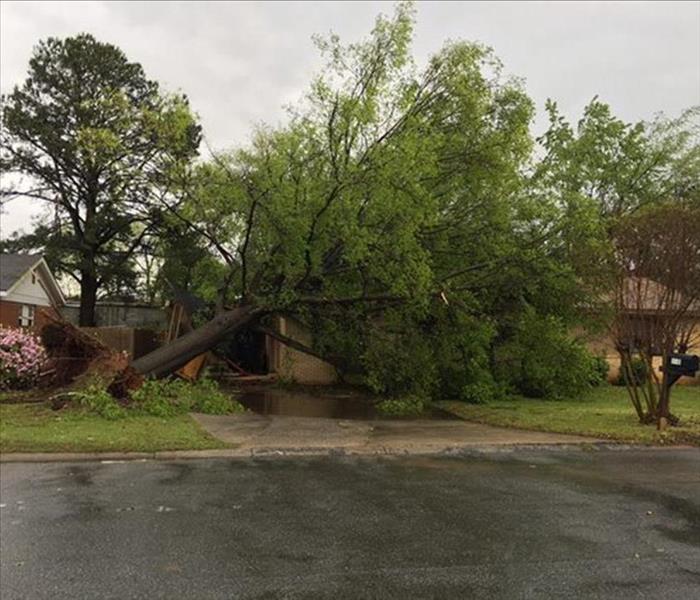 Fallen Tree Storm Damage in Warner Robins, GA
Fallen Tree Storm Damage in Warner Robins, GA
What is a storm damage?
Storm damage is caused by weather-induced accidents. It includes damage to exterior of homes including roofing that has fallen out of the roof or siding deteriorated from heavy rainstorms, tornadoes, hurricanes, hail, or other major catastrophic weather events.
Do you respond 24 hours a day?
Yes we are! Our technicians and call operators are available 24/7/365 to respond to your storm damage emergency while being Faster to Any Size Disaster.
Will my home owners insurance cover the cost?
This depends on the kind of property damage you have. Typically, if the damage was unexpected and unintentional, then this is very likely. So in a storm damage event, this is likely. However, bear in mind that your total deductible may be affected. The best option is to understand your policy before a storm event. As the number 1 brand in property restoration, we are experts in dealing with insurance companies to resolve your storm damage quickly and effectively.
Is your firm and technicians certified?
All of our technicians receive IICRC WRT (Water Restoration Technician) training. However, many hold multiple storm-damage specific certifications including: ASD (Applied Structural Drying), AMRT (Applied Microbial Remediation Technician), and CDS (Commercial Drying Specialist) certifications.
Are you a properly insured company?
Yes, SERVPRO® of Houston County has the necessary insurance and certifications in the State of Georgia to restore your storm damage emergency "Like it never even happened."
What are damages caused by storm?
Depending on weather conditions, thunderstorm damage can be caused by high winds, floods from rains, and lightning strikes. Strong thunderstorms can produce tornadoes that can destroy businesses property in huge quantities. Hurricanes can also cause severe damage with high winds and heavy rain.
What kind of damage do I look for after a storm?
Find broken glass or damaged windows in the windows by examining them. Keep an eye on tiny holes or cracks at unavoidable spots. Find a loose shingle. Unidentified dark spots can cause damage from rain or other storms.
Surprising Storm Statistics Across Houston County, GA & the USA
2/10/2022 (Permalink)
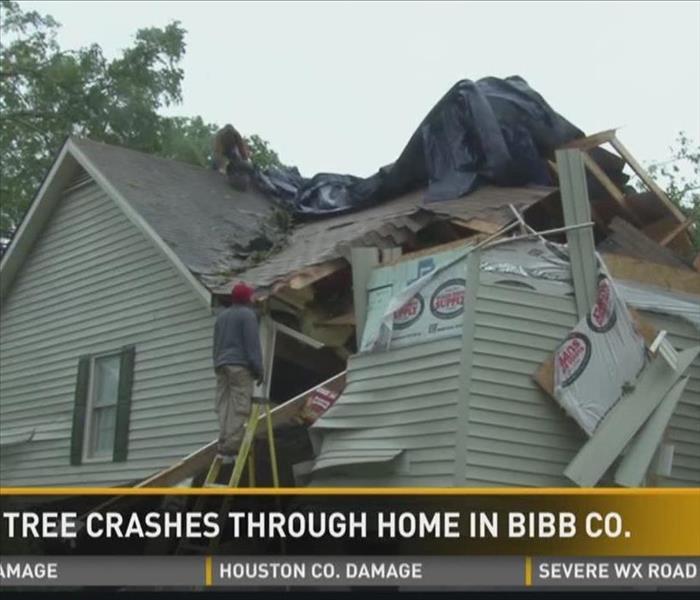 Storm Damaged House in Houston County, GA
Storm Damaged House in Houston County, GA
Water Damage Caused by Storms
Storms can cause a variety of water damage, depending on the type and intensity of the storm. Gray water, floodwater, standing water, and even slow leaks from continuous stormwater around a home or property can wreak havoc on a building. Some common causes of storm-related water damage include:
Water getting in through windows:
If rain or snow accumulates on the roof and then slides off, it can pour into window frames and cause extensive water damage.
Water getting in through the foundation:
If the ground is saturated from too much rainfall, water can seep into your home through cracks in the foundation.
Water getting in through the roof:
A leaky roof is one of the most common sources of storm-related water damage. High winds can easily blow shingles off a roof, leading to interior leaks and serious property damage.
Water getting in through walls:
If the walls are not properly sealed, water can enter your home through electrical outlets, doorways, or other openings.
The speed of storm winds is also a major factor in how much damage it causes. Winds speeds of over 100 mph can easily tear off roofs, send debris flying through the air, and cause serious flooding.
Because of the increased severity of storms across the country due to climate change, now more than ever, our damage restoration teams at SERVPRO® of Houston County have worked hard to train and prepare to respond to any size water, mold, storm, or fire property loss.
Major Storms in Houston County, GA & the USA
According to the National Weather Service, there were 43 tornadoes in Georgia in 2021. This ranks Georgia fifth in the nation for tornado activity.
In 2020, storm damage resulted in approximately $210 billion worth of damages across the United States. Tornadoes accounted for a significant portion of this damage, with wind speeds reaching up to 300 mph and causing extensive destruction.
The US was hit with 20 extreme weather events in 2021 that resulted in $145 billion in damages, according to a report from the National Oceanic and Atmospheric Administration (NOAA). This is one of the highest numbers of extreme weather events on record. Total storm damage costs are still being calculated.
"The last five years have cost $745 billion in 86 separate billion-dollar weather disasters, an average of more than 17 a year, a new record. That´s nearly $100 billion more than the combined total of all the billion-dollar disasters from 1980 to 2004, adjusted for inflation and far more the three billion-dollar disasters a year that the nation averaged in the 1980s." - Dailymail.com
If you've been hit by storm damage, don't wait to call in the professionals. SERVPRO® of Houston County has the experience and equipment necessary to get your property back to its original condition. We're available 24/75 to respond to your needs, so please don't hesitate to contact us today.
Types of Storm Damage Restoration Equipment
1/28/2022 (Permalink)
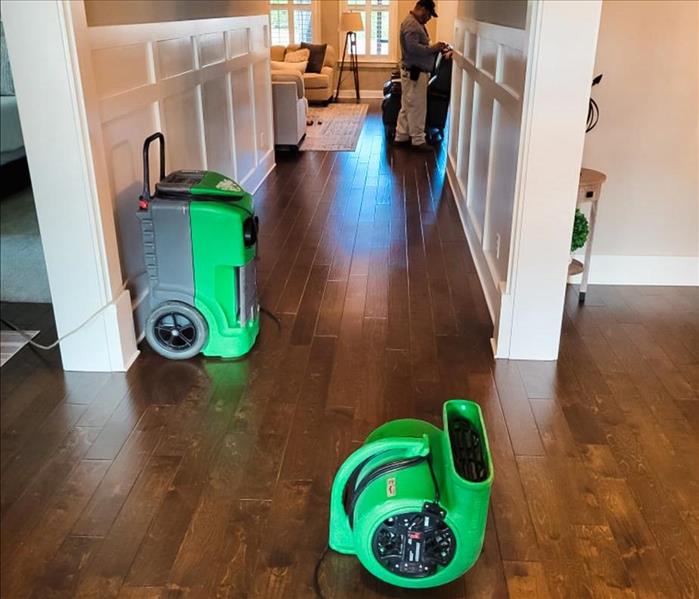 Property Damage Restoration Equipment at Work in Houston County
Property Damage Restoration Equipment at Work in Houston County
If your business has been hit by storm damage it's important to call in the professionals as soon as possible. SERVPRO® of Houston County is the best company for storm damage restoration, due to our extensive experience and equipment. We have the right tools and techniques to make any project "Like it never even happened." In addition, we're available 24/7 to respond to your needs, no matter what time of day or night it is.
Whether it's board-up services, water damage cleanup, or mold removal, we'll be there to help you get your home or business back up and running as soon as possible. Call us today for a free consultation in Warner Robins, and more locations across Houston County, GA.
A few of the tools we use when restoring property storm damage include:
Air movers:
Used to move large volumes of air quickly across a surface in order to evaporate moisture and dry the area.
Industrial Dehumidifiers:
Remove excess moisture from the air, which helps prevent the growth of mold and mildew. With our heavy-duty truck mount dehumidifiers, there's no property damage too significant for our team to handle.
HEPA Vacuums:
Capture small particles and allergens from almost any surface.
Thermal Imagers:
Help us see moisture and heat loss in walls, ceilings and floors so that we can target our repairs.
Water Extraction Units:
Remove large quantities of water quickly from carpets, furniture and other surfaces.
Power Generation:
In some cases, storm damage can knock out power to a property. Our team has the ability to provide temporary power so that we can continue to restore your home or business under any conditions.
Moisture Meters:
Help us determine the level of moisture in walls, ceilings, building materials and floors so that we can target our drying, cleaning, and repairs.
Our teams at SERVPRO® of Houston County have the right tools, techniques, equipment, and supplies to effectively and professionally restore your home's or business's storm damage "Like it never even happened."
Call us today at (478) 224-4148 for rapid restoration assistance.
The Storm Damage Checklist: What to Look for
12/2/2021 (Permalink)
 Falle tree on a house after a storm
Falle tree on a house after a storm
After any storm hits in Houston County, GA, there’s usually some type of damage to deal with. It’s important to know what that damage looks like so you can fix it and make sure your home stays safe and secure for you and your family. That’s why we put together this quick guide to the different kinds of storm damage and how to fix them if they happen to strike your home, so you can get back to normal life as soon as possible!
Storm Damage Windows
Windows can be damaged from a storm in a few different ways. A window that breaks during a storm is an obvious example, but glass can crack even if it doesn't shatter. Since windows are typically made of glass, they're susceptible to cracking and shattering—especially when strong winds are involved. Cracks and chips don't always prevent windows from operating properly, but they allow outside air and moisture into your home. That is why it's important to inspect your windows thoroughly after a storm. If your windows have cracked or chipped glass, you should replace them immediately; keep in mind that storms are unpredictable so emergency repairs may be needed at any time.
Storm Damage Roof
After a storm, it’s important to check your roof and make sure it is still secure. Hire a professional roofer if you find any of these problems with your roof after a storm. Look carefully at your shingles. If any shingles are loose, cracking, and oddly indented, you may want to snap a photo and notify your insurance. Be sure to check for debris, exposed underlayment, detached fascia, or drip edge throughout the roof perimeter as well.
Clogged Gutters
Gutters are necessary for diverting water away from your home. This is particularly important during a storm, when high winds can turn hail into projectiles, or push rain into all kinds of home crevices. While you don't want them clogged in normal conditions, making sure they're clear and properly attached to your home after a storm is essential. As soon as you know there's been a storm in your area, look at your gutters and get rid of any leaves or other detritus that may have lodged there; same goes if it's been raining continuously over an extended period of time.
Also, watch for tree limbs or small branches throughout the gutters and downspouts. And don't forget to check on them regularly—once every few weeks is usually sufficient—and clean out any debris before another big storm hits.
Exterior Damage
Exterior damage can be caused by wind, rain, lightning or hail. If your home has exterior damage from a storm, don't just check your roof, gutters and windows. Take a look at your exterior wall siding, paint, and stucco. If you see siding that is detached, indented, cracked, discolored, or loose, you may want to have it inspected. Paint peeling, stucco cracks, or other visible imperfections on the exterior of your home may also be signs of storm damage. And don't forget to check brick walls, including the mortar joints, for any potential damage from the storm.
Be sure to inspect the outside of your home thoroughly for exterior damage after any large storm. If you are not sure what to look for, our teams are Here to Help!
Water Damage
Although most of us focus on damage from wind during a storm, water is an equally big concern. An average hurricane with winds of 74 miles per hour can bring rainfall ranging from 1/2 inch to over 5 inches in 24 hours. The resulting runoff often causes basement flooding, roof leaks and other hidden problems that can be expensive to repair. Be sure your homeowner's policy covers flood damage (if you live in a flood-prone area) and take steps to reduce your risk prior to a storm by clearing leaves and debris away from gutters and drains.
If there is exterior damage on the roof, windows, or exterior walls, water damage may not be far behind. If there is any kind of water or storm damage, SERVPRO of Houston County can help you get your property restored rapidly.
Call us at (478) 224-4148 for immediate assistance. Our teams are ready and Here to Help!
The Why Behind the Danger of Thunderstorms | SERVPRO® of Houston County
6/22/2021 (Permalink)
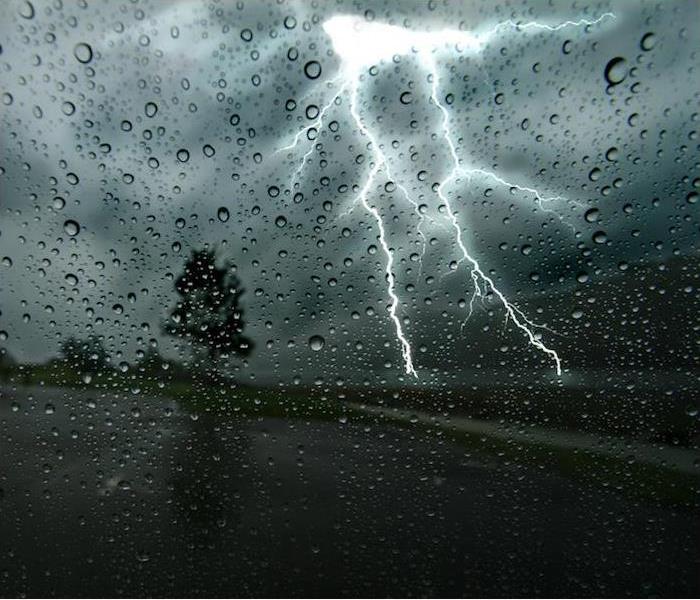 Thunderstorms can pop up at any moment. Contact SERVPRO of Houston County if you experience any damage.
Thunderstorms can pop up at any moment. Contact SERVPRO of Houston County if you experience any damage.
While thunderstorms are incredibly common, especially this time of year, they can be very serious in terms of the damage they can cause. Though some storms can make their way through without much collateral damage, some don’t—and they can turn deadly within moments due to forceful winds, hail, lightning and flash flooding.
A thunderstorm is defined as a transient storm of lightning and thunder, usually with rain and gusty winds, sometimes with hail or snow, produced by cumulonimbus clouds.
For a thunderstorm to be classified as severe, it will contain one inch (or larger) hail and straight-line winds of at least 58 miles per hour. Let’s look at some ways this weather may present hazards so that you can plan for ways to stay safe the next time one comes through Houston County.
What Damages Are Associated With Thunderstorms?
Lighting strikes can cause serious damage and injury. One of the most dangerous components of a thunderstorm are lightning strikes, causing upward of 300 injuries every year. This does not even count the damage that lightning strikes may inflict on homes or businesses. The most common effects of lightning are house fires or trees that can fall on these structures. By definition, a thunderstorm produces lightning, so even if it’s not within your range of visibility, there is a possibility that it can appear quickly.
Hail damage to property. Even the thought of hail can be a dreadful experience because it can do serious damage to anything it touches. In a very intense thunderstorm, hail that is an inch or larger, there could be damage to uncovered cars, injuries to people who are not sufficiently sheltered and significant damage to sidings, roofs and other structures on private and commercial property. Hail can be a powerful and unpredictable force that falls at a tremendous speed, making it one of the most impactful elements of a thunderstorm.
Property loss or injury due to flash flooding. While flooding is a major concern, even for those who do not live or work in an obvious flood plain, it can cause many serious problems. Flash floods are known to happen without warning any time heavy rain saturates an area. It is oftentimes able to become a life-threatening scenario in the event of a storm drain backing up or nearby roadside ditches filling with water. Although it’s incredibly dangerous, many people still attempt to cross flooded roadways, causing damage to their cars and possibly having their car carried away by the tide.
Thunderstorm damage can happen at any time and is capable of causing significant damage to homes or commercial spaces. Our team is here to help should you have any damage due to a thunderstorm. Contact us 24⁄7 for more information on how we can serve your Houston County home or business.
What Types of Damage Can Thunderstorms Cause to Homes? | SERVPRO® of Houston County
5/4/2021 (Permalink)
Thunderstorms are one of the more dramatic weather events, and they certainly make themselves known through the crashes and bright bolts of lightning. With all the chaos, you might wonder exactly how these storms can cause damage to your home so you can be aware of what to watch out for.
There are several ways that a thunderstorm can lead to issues around the house, including lightning damage, flood damage and the development of water leaks. Being aware of what can happen is the best way to keep yourself and your home safe and damage-free when the next band of storms rolls through.
Lightning Damage Thunderstorms are caused by electrical charges in the air, which produce the lightning and thunder we can see and hear—meaning every thunderstorm brings the potential for lightning damage as well. While many lightning bolts will strike from cloud to cloud, the ones that strike the ground can cause serious damage to buildings. Lightning that strikes on or near a home can send an electrical current through the wiring, which can lead to surges to electronics and even electrical fires within the walls.
Flood Damage Floods can be caused for many reasons, but typically flash floods are caused by sudden, heavy rainfall that overwhelms an area, and they can cause serious damage. Flash floods are a big concern after thunderstorms because they can overwhelm any area—not just one that is considered vulnerable to flooding in general. They also often catch people off guard, so it is important to always tune into your weather radio if flash flooding is a possibility. While the physical damage they cause can be devastating, they can also be dangerous.
Water Leaks Leaks around the house are extremely common after heavy rain, as the moisture can work its way into small vulnerabilities that homeowners were not aware of. Check your roof after every big storm to look for missing shingles, as that may be an indicator that there is a leak underneath. Also check around windows and doors to ensure their seals have held up and be sure there is no pooling water in your gutters or around your foundation.
If you have received storm damage to your home, you can count on us to help. Contact us today to learn more about our storm damage restoration process.
Recovering With Safety in Mind After a Flood | SERVPRO® of Houston County
4/28/2021 (Permalink)
There are many things that can cause a flood to occur, and even areas that are landlocked are not fully immune from their impact. Many people falsely assume that a flood could never happen to them, but we recommend that residents have a plan in place no matter where they live. This will help you know exactly what to do and how to do it safely to expedite your flood recovery process and begin your return to normal.
Tips for a Safe Flood Recovery
Avoid further safety hazards. For those who have had to evacuate their areas due to a flood, the desire to return home as quickly as possible is strong. However, wait for your local officials to state that it is safe, as floodwaters can hide many hazards that can be dangerous or fatal.
Air out the home. Floodwaters are not the only thing that can cause damage during a flood, as mold can begin to grow quite quickly after the moisture sets in. Because mold thrives on stagnant air, increasing air flow can lessen the likelihood that it will be able to take hold and begin causing damage, so open doors and windows if it is safe to do so. This has the added benefit of keeping the air healthy for anyone in the home working on the cleanup process.
Document the damages. You will likely want to begin improving your home and salvaging your belongings right away, but before you do so, take some time to document everything that has been damaged. Make a list of items and take ample pictures, which will serve both your records and the insurance company’s if you are able to file a claim.
Contact your restoration and insurance companies right away. If you have coverage through a flood insurance provider, you should alert them of your damages right away. From there, you can call us 24⁄7 so we can work with your insurance company to get your restoration done as quickly as we can.
If your home has been damaged in a flood, we are here for you. You can contact us 24⁄7 to receive a quick response and set the restoration process in motion.
Hurricane Ready
4/28/2021 (Permalink)
When it comes to hurricanes, the category means a lot. If a CAT 1 hurricane is coming your way, you can ride out the storm in your home. However, if a CAT 4 hurricane is barreling your way, you want to evacuate. So what does each category mean? Category 1 is a minimally damaging hurricane with winds reaching 95 miles per hour. The storm surge could range anywhere from 4 to 5 feet above sea level. Category 2 hurricane is referred to as moderately damaging. Winds could be anywhere from 96 to 110 miles per hour and the storm surge reaches 8 feet. Category 3 can bring extensive damage with winds ranging from 111 to 130 miles per hour, and the storm surge reaches 12 feet. Category 4 brings extreme damage with winds reaching 131 to 155 miles per hour. The storm surge for a CAT 4 is between 13 to 18 feet. Lastly is a category 5 hurricane, this cat of hurricane brings catastrophic damage with winds reaching well over 155 miles per hour, and the storm surge going over 18 feet. With any category of a hurricane, you want to board up your home and secure the perimeter around your home. The winds could easily blow items around your home into a window or damage your vehicle. If you do not know exactly what to do in order to prep your home for a hurricane, watch the local news for tips and ideas on what to do to best fit your home.
Why Flash Floods Are Such a Risky Component of Storms | SERVPRO® of Houston County
12/2/2020 (Permalink)
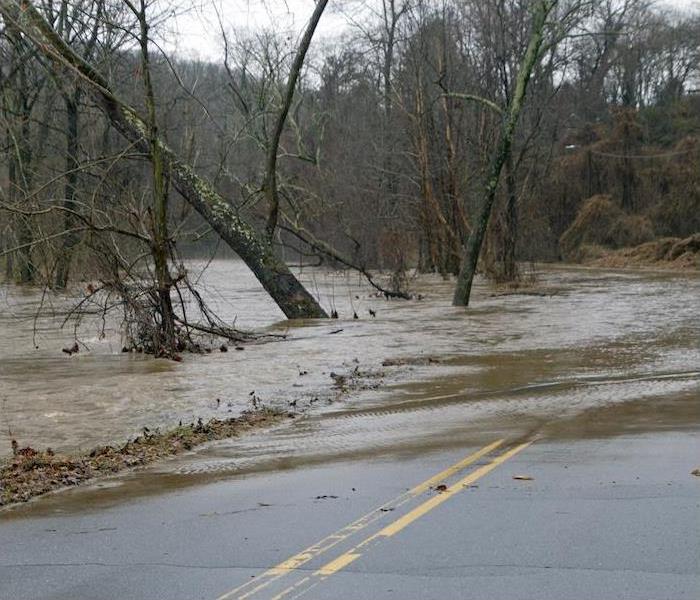 SERVPRO of Houston County is your local water & storm restoration expert. We will get the job done right, contact us today.
SERVPRO of Houston County is your local water & storm restoration expert. We will get the job done right, contact us today.
No matter what the situation, if there is severe weather occurring, it is important to prioritize safety and take it seriously—especially if flash flooding is involved. Floods cause the second-highest fatality rate of any weather event in the country, and flash floods are far more dangerous than any other type.
Because of how suddenly they can happen, flash floods are aptly named. People in the impacted areas are rarely provided more than a few moments of notice, and anything from roadway drains to runoff creeks can quickly overflow if the rain is heavy enough. Knowing the facts surrounding flash floods is key to keeping yourself protected.
The Differentiating Factors of Flash Floods
Though different types of floods carry different risks, as a whole, flash floods are the most dangerous due to their speed. Once rain starts, flash floods follow in under six hours, often in as little as three. Flash floods also happen in an extremely localized manner, often hurting urban areas and other places that do not typically have to be concerned with flood risk.
The Hierarchy of Flash Flood Alerts
Anytime there is severe weather, it is vital to pay attention to your local weather station for the most updated alerts possible. Flash floods happen suddenly, so while a flash flood watch indicates that there may be conditions present for a flash flood, when a flash flood warning is declared, you will only have moments to react in many cases. If there is a flash flood emergency issued, move to higher ground immediately.
The Flash Flood Safety Tips to Memorize
Because time is of the essence in the event of a flash flood, knowing the facts about safety is key to make sure you are able to act rapidly. Here are some of the tips everyone should know:
- When severe weather is possible, stay alert to weather broadcasts.
- Draft and practice an evacuation plan with your family.
- Never attempt to get across flooded areas, either on foot or in a vehicle.
- Limit contact with floodwater as much as possible due to contaminants.
- Plan your evacuation with multiple routes, as water can block roads quickly.
If your home or business has been damaged due to a flood or other severe weather, you can depend on us. Contact us at any hour to learn more about our services or to report damage to your property.
Apply Storm Safety to Any Situation | SERVPRO® of Houston County
12/2/2020 (Permalink)
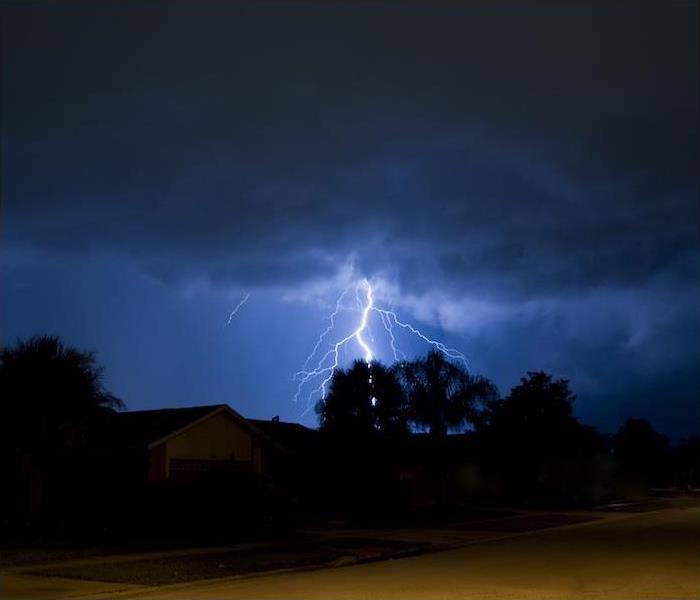 Have you been affected by a storm event? SERVPRO of Houston County is available 24/7 and ready to assist you with any storm damage.
Have you been affected by a storm event? SERVPRO of Houston County is available 24/7 and ready to assist you with any storm damage.
When summer weather turns hot and sticky, you can be certain that summertime storms are not far behind. Storms may feel like a routine event during the summer, but thunderstorms can still cause severe damage even when they pop up briefly.
Because you never want to be caught off-guard by a storm, here are some safety tips you can use anywhere you go to stay storm-safe.
Never Be Caught Off Guard by a Summer Storm
Know your options for shelter. When you get the news that a storm is headed for your area, the best thing to do is to seek shelter in an interior room of your house that has no windows until it passes. With these sudden storms, however, this is not always an option. You can take shelter in your car if necessary, just make sure to pull over in a safe area and avoid touching metals or starting the car while the storm is near.
Practice electrical safety. The electrical wiring in a building offers a great vessel for lightning to travel through when it strikes, which can harm electronics and cause fire-starting sparks as well. It is recommended to always use surge protectors on each outlet to lower the risk of this, and if you have time, unplug everything in your home or office before a storm arrives.
Avoid direct contact with concrete. While the structural integrity of concrete structures is unrivaled, they actually are not the safest structure for storms with thunder and lightning. Concrete is typically reinforced with metal rods, and if lightning strikes, these rods can disburse electrical charge throughout the concrete. Sitting on a concrete floor or leaning against a concrete wall can put you at risk for electric shock if storms are nearby.
Stay indoors for at least 30 minutes. While it may feel like summer thunderstorms are over as quickly as they begin, that is not always the case. Lightning strikes can travel across 25 miles and strike a ways away from the center of the storm, so consider setting a timer after the last thunder clap for a half hour to be on the safe side.
If your home sustains damage due to a storm, you can count on us to help. Contact us at any hour to learn more about our storm restoration process.
All About How Lightning Strikes Are Formed | SERVPRO® of Houston County
5/28/2020 (Permalink)
There are quite a few ways that thunderstorms can cause damage, but perhaps one of the most
dangerous and most misunderstood ways is via lightning strikes. We wanted to take the time to
go over what lightning is, when it occurs, where it strikes and what damage it can cause to your
property so you can be aware and prepared.
What Is Lightning?
Lightning is an electrical spark on an atmospheric level. It occurs when there are positive and
negative charges between clouds, in the air or between the clouds and the ground. When this
charge builds past a threshold, there is a sudden discharge of the electricity—which is what we
see as a flash of lightning. The lightning’s goal is to balance out the atmospheric charge, which
is why it will strike an object and travel through it to the ground. After this, the charges are
balanced until they begin building up again.
When Does Lightning Occur?
Lightning occurs every time there is a thunderstorm! All thunderstorms have lightning because lightning is actually what produces thunder. When lightning strikes, either between clouds or toward the ground, the force creates the loud crack we know as thunder. Thunder can be heard as far as 25 miles away from where the lightning strike occurs, which is why you can sometimes hear thunder without ever seeing a lightning strike.
What Do Lightning Strikes Target?
There are quite a few myths regarding where, what and how often lightning strikes during
thunderstorms. It is true that lightning will generally target taller objects—that is why skyscrapers generally have lightning rods and one should never seek shelter under a tree during a storm. However, because lightning is simply looking for the most simple path to reach the ground, lightning can really strike anywhere, including in the same place more than once. It will seek out any place an opposite charge builds up in order to ground itself and release the atmospheric charge we mentioned earlier.
What Property Damage Can Lightning Do?
Lightning can cause significant property damage if it strikes your home. Not only can it lead to
power surges as it travels through your outlets, but it can also cause fires later on if it damages
electrical wiring within the walls. It can also cause combustion when it strikes as it is hot enough
to set wood and building materials on fire.
If your home has been damaged in a storm, we are here for you. Get in touch with us any time
to be guaranteed a quick response.
How to Deal With Storm Damage to Your Home | SERVPRO® of Houston County
5/28/2020 (Permalink)
Severe thunderstorms can cause serious damage to a household and are an alarming event. If
you sustain damage to your home from a storm, staying safe, preventing additional damage and
working with your insurance and restoration provider are all important keys to handling the
issue.
Here are some tips for dealing with storm damage to your home:
Prioritize your safety above all else. While you will want to inspect your home as quickly as
possible in the aftermath of a storm, remember that safety will always need to come first. Watch
out for common hazards such as shattered glass or splintered wood strewn across the ground,
and always assume that downed power lines are active and avoid them entirely. If you smell
gas or suspect a gas leak, shut off the main gas line and alert your provider right away.
Do an assessment and prevent additional damage. If it is safe to do so, perform an initial
assessment to see what the extent of the damage is. The roof is the most likely spot damage
can manifest, but broken windows, torn siding and damage to outdoor appliances are also
common. Be sure to board or tarp up any areas that are exposed to the elements to prevent
additional damage from occurring while you wait on your insurance company.
Alert your insurance provider. Every claim process is different, so getting in touch with your
insurance provider once you determine if you have damage is key. In some cases, you will not
be able to begin cleanup until after they send an adjuster out to you, so it is important you know
the policy in order to prevent the accidental nullification of your claim. If you are not sure if the damage repair will total more than your deductible, they can help you work through that and help you determine if pursuing a claim is worthwhile.
Work with a qualified restoration company. Unfortunately, scams are extremely common
following disasters. Individuals posing as contractors will often move through an area,
demanding deposits or personal information to start the restoration process. In order to be sure
you are not falling victim to these shady business practices, work with a company that is a
trusted restoration leader in your area instead.
If your home has been damaged in a storm, we are here for you. Contact us at any time to
report your damage and receive a rapid response.
What Types of Damage Can Thunderstorms Cause to Homes? | SERVPRO® of Houston County
5/7/2020 (Permalink)
Thunderstorms are one of the more dramatic weather events, and they certainly make themselves known through the crashes and bright bolts of lightning. With all the chaos, you might wonder exactly how these storms can cause damage to your home so you can be aware of what to watch out for.
There are several ways that a thunderstorm can lead to issues around the house, including lightning damage, flood damage and the development of water leaks. Being aware of what can happen is the best way to keep yourself and your home safe and damage-free when the next band of storms rolls through.
Lightning Damage Thunderstorms are caused by electrical charges in the air, which produce the lightning and thunder we can see and hear—meaning every thunderstorm brings the potential for lightning damage as well. While many lightning bolts will strike from cloud to cloud, the ones that strike the ground can cause serious damage to buildings. Lightning that strikes on or near a home can send an electrical current through the wiring, which can lead to surges to electronics and even electrical fires within the walls.
Flood Damage Floods can be caused for many reasons, but typically flash floods are caused by sudden, heavy rainfall that overwhelms an area, and they can cause serious damage. Flash floods are a big concern after thunderstorms because they can overwhelm any area—not just one that is considered vulnerable to flooding in general. They also often catch people off guard, so it is important to always tune into your weather radio if flash flooding is a possibility. While the physical damage they cause can be devastating, they can also be dangerous.
Water Leaks Leaks around the house are extremely common after heavy rain, as the moisture can work its way into small vulnerabilities that homeowners were not aware of. Check your roof after every big storm to look for missing shingles, as that may be an indicator that there is a leak underneath. Also check around windows and doors to ensure their seals have held up and be sure there is no pooling water in your gutters or around your foundation.
If you have received storm damage to your home, you can count on us to help. Contact us today to learn more about our storm damage restoration process.
Weather Emergency
4/20/2020 (Permalink)
Whether it is a Category 5 hurricane or a bad thunderstorm rolling through, home owners should be prepared for any storm.
Take safety precautions
Any type of heavy winds can cause roof shingles, natural debris, or unnatural debris to occur. After the storm is over, take precaution when going outside because there could be debris such as nails, sharp wood, or other potentially dangerous items that are around your home.
Photograph the damage
If it is major or minor, take pictures IMMEDIATELY. You may not realize that something damaged your home until after you have moved it, so take pictures just in case (there is always the delete button). Insurance companies will need to see before pictures of the damage.
Contact your insurance company… and SERVPRO!
A homeowner must call their insurance company so an adjuster can be sent out to examine the damage so payment can be made. Don’t forget to call your favorite restoration and mediation company, SERVPRO of Houston County. We work around the clock to ensure happiness from our community! We will send a team out as quickly as possible to begin work for your home if disaster strikes!
Storm Damage
4/20/2020 (Permalink)
If you have ever had a weather related emergency, such as a flood, tree fall, pipe burst you may have experienced the frustration of calling for help only to find you would be put on a list and gotten to when you’re gotten to. If you have not had a weather or event related issue at your home or business, good. If you ever do, here’s a few things to keep in mind:
1) Everyone you reach out to, whether a plumber, tree company or SERVPRO wants to help you and as quickly as possible.
2) When an area is affected, whether by a microburst, hurricane or deep freeze, the damage is common. In other words, if your pipes freeze when the temperature drops from 40 to seven over a 24 hour period, the same thing is happening all around you.
3) Immediate response resources in an area are always limited. Your plumber of 15 years can not hire additional crews overnight, as much as he would like to.
So when this occurs, it pays to Go Big.
At SERVPRO of Houston County, our first question is always: Is the source fixed or do you need help fixing the source? No job is to big or small for our crew of certified and highly trained experts! When it comes to your property, home, or business you can depend on SERVPRO to get the job done, and done right! We have the resources for all trades and labor and can properly and efficiently handle any job no matter the size!
A brand you can trust, a company you can depend on!
Whether its factory fire, burst water heater or a tree on a house, We are Ready for Whatever Happens and Are Always Here to Help!
Storm Tips
3/28/2018 (Permalink)
Thunderstorms & Lightning
All thunderstorms are dangerous. Every thunderstorm produces lightning. While lightning fatalities have decreased over the past 30 years, lightning continues to be one of the top three storm-related killers in the United States. On average in the U.S., lightning kills 51 people and injures hundreds more. Although most lightning victims survive, people struck by lightning often report a variety of long-term, debilitating symptoms.
Other associated dangers of thunderstorms include tornadoes, strong winds, hail and flash flooding. Flash flooding is responsible for more fatalities – more than 140 annually – than any other thunderstorm-associated hazard. Dry thunderstorms that do not produce rain that reaches the ground are most prevalent in the western United States. Falling raindrops evaporate, but lightning can still reach the ground and can start wildfires.
Before Thunderstorm and Lightning
To prepare for a thunderstorm, you should do the following:
- To begin preparing, you should build an emergency kit and make a family communications plan.
- Remove dead or rotting trees and branches that could fall and cause injury or damage during a severe thunderstorm.
- Postpone outdoor activities.
- Secure outdoor objects that could blow away or cause damage.
- Get inside a home, building, or hard top automobile. Although you may be injured if lightning strikes your car, you are much safer inside a vehicle than outside.
- Remember, rubber-soled shoes and rubber tires provide NO protection from lightning. However, the steel frame of a hard-topped vehicle provides increased protection if you are not touching metal.
- Shutter windows and secure outside doors. If shutters are not available, close window blinds, shades or curtains.
- Unplug any electronic equipment well before the storm arrives.
Evacuating for a Hurricane
3/28/2018 (Permalink)
Hurricane season can be extremely scary for those who live on or around the coast. With the fear of winds, rain, and storm surge, people will be concerned with their safety and their home. Homeowners should be prepared to evacuate their homes and go further inland. Evacuations in itself can be intimidating. Here are some ways to help prepare you for an evacuation.
Make a Family Ready Plan
In this you want to include cash, prescription medications, and enough food and water for your entire family and pets for a few days in case these items are not readily accessible. For any families that are traveling in different vehicles make sure you have a backup plan if cell phones are not usable.
Think about what to do with valuable irreplaceable items
Documents such as passports, licenses, insurance cards, social security cards, and other legal papers you want to make sure you have copies of these along with a waterproof/fireproof container and travel with them. Other items such as irreplaceable photographs and meaningful items, place in a watertight and fireproof container to store in a safe place. You may not be able to take them with you for room purposes.
Take care of your food at home
You may want to freeze most of your food incase power is loss. Set your freezer on the coldest temperature so it stays colder longer. If you are anticipating a long-term power outage, you may want to clean out the refrigerator and freezer. If you do this, leave the doors open so there will be little risk of smell when you return.
Clear the grass areas around your home and secure windows and doors
If a hurricane is approaching, there is a high risk of items around your home to be blown around. This increases your risk of windows to be broken because of extra debris. Tie these items down or place them in a safe enclosed area for safe keeping. With the windows and doors, make sure you are boarding up the windows so there is less of a risk for window leaks and breaks.
When you return from the hurricane, if you have experienced any damage to your home, call your SERVPRO of Houston County. We will send a team out as soon as possible to begin work on your home.
Hurricane Ready
3/23/2018 (Permalink)
Are you prepared for a hurricane??The 2018 Atlantic hurricane season runs from June 1 to November 30. The areas covered include the North Atlantic Ocean, Gulf of Mexico and the Caribbean Sea. The National Weather Service defines a hurricane as "an intense tropical weather system with well-defined circulation and sustained winds of 74 mph (64 knots) or higher. “Here is a helpful link to get you prepared in case of a hurricane:
https://www.ready.gov/hurricaneshttp://www.nhc.noaa.gov/prepare/ready.php
When you return back to your home and you have damage, do not hesitate to call SERVPRO of Houston County for your storm damage restoration needs. We have IICRC Certified technicians who are highly trained in reporting to a job on time and working in a timely manner. We always strive to work quickly and efficiently to get you back in your home!
What to do when a storm hits
3/23/2018 (Permalink)
Whether it is a Category 5 hurricane or a bad thunderstorm rolling through, home owners should be prepared for any storm.
Take safety precautions
Any type of heavy winds can cause roof shingles, natural debris, or unnatural debris to occur. After the storm is over, take precaution when going outside because there could be debris such as nails, sharp wood, or other potentially dangerous items that are around your home.
Photograph the damage
If it is major or minor, take pictures IMMEDIATELY. You may not realize that something damaged your home until after you have moved it, so take pictures just in case (there is always the delete button). Insurance companies will need to see before pictures of the damage.
Contact your insurance company… and SERVPRO!
A homeowner must call their insurance company so an adjuster can be sent out to examine the damage so payment can be made. Don’t forget to call your favorite restoration and mediation company, SERVPRO of Houston County. We work around the clock to ensure happiness from our community! We will send a team out as quickly as possible to begin work for your home if disaster strikes!
Hurricane Categories
3/23/2018 (Permalink)
When it comes to hurricanes, the category means a lot. If a CAT 1 hurricane is coming your way, you can ride out the storm in your home. However, if a CAT 4 hurricane is barreling your way, you want to evacuate. So what does each category mean? Category 1 is a minimally damaging hurricane with winds reaching 95 miles per hour. The storm surge could range anywhere from 4 to 5 feet above sea level. Category 2 hurricane is referred to as moderately damaging. Winds could be anywhere from 96 to 110 miles per hour and the storm surge reaches 8 feet. Category 3 can bring extensive damage with winds ranging from 111 to 130 miles per hour, and the storm surge reaches 12 feet. Category 4 brings extreme damage with winds reaching 131 to 155 miles per hour. The storm surge for a CAT 4 is between 13 to 18 feet. Lastly is a category 5 hurricane, this cat of hurricane brings catastrophic damage with winds reaching well over 155 miles per hour, and the storm surge going over 18 feet. With any category of a hurricane, you want to board up your home and secure the perimeter around your home. The winds could easily blow items around your home into a window or damage your vehicle. If you do not know exactly what to do in order to prep your home for a hurricane, watch the local news for tips and ideas on what to do to best fit your home.
Winterize your home
3/23/2018 (Permalink)
Check the pipes
With the temperature going down into the freezing numbers, homeowners should drip all the faucets at night. This ensures no water is still to freeze and burst a pipe overnight. A tip for outside pipes, make sure the pipe and hoses are free of water.
Chimney safety
For homeowners with a chimney, you should get a professional to inspect and clean your chimney so there is very small risk of a chimney fire.
Clean your gutters
With winter approaching after fall, homeowners should clean out all of the gutters surrounding the home. Leaves, twigs, and other outdoor trash can cause water to be trapped in the gutter and freeze. When the ice unfreezes, it can cause a leak into the home.
Overall, you want to make sure your home is well insulated so your home will stay cozy and warm. Don’t forget to check the basement, attic, and roof for any indication of danger before the cold weather is in full swing. And of course, if you see anything in your home that could potentially turn into a home disaster, please call us. We can send one of our technicians out to inspect your home before anything further happens!
Storm Damage
12/16/2016 (Permalink)
If you have ever had a weather related emergency, such as a flood, tree fall, pipe burst you may have experienced the frustration of calling for help only to find you would be put on a list and gotten to when you’re gotten to. If you have not had a weather or event related issue at your home or business, good. If you ever do, here’s a few things to keep in mind:
1) Everyone you reach out to, whether a plumber, tree company or SERVPRO wants to help you and as quickly as possible.
2) When an area is affected, whether by a microburst, hurricane or deep freeze, the damage is common. In other words, if your pipes freeze when the temperature drops from 40 to seven over a 24 hour period, the same thing is happening all around you.
3) Immediate response resources in an area are always limited. Your plumber of 15 years can not hire additional crews overnight, as much as he would like to.
So when this occurs, it pays to Go Big.
At SERVPRO of Houston County, our first question is always: Is the source fixed or do you need help fixing the source? No job is to big or small for our crew of certified and highly trained experts! When it comes to your property, home, or business you can depend on SERVPRO to get the job done, and done right! We have the resources for all trades and labor and can properly and efficiently handle any job no matter the size!
A brand you can trust, a company you can depend on!
Whether its factory fire, burst water heater or a tree on a house, We are Ready for Whatever Happens and Are Always Here to Help!
 SERVPRO of Houston is ready to help in a moments notice after spring showers leak in to your home or business.
SERVPRO of Houston is ready to help in a moments notice after spring showers leak in to your home or business.



 24/7 Emergency Service
24/7 Emergency Service













